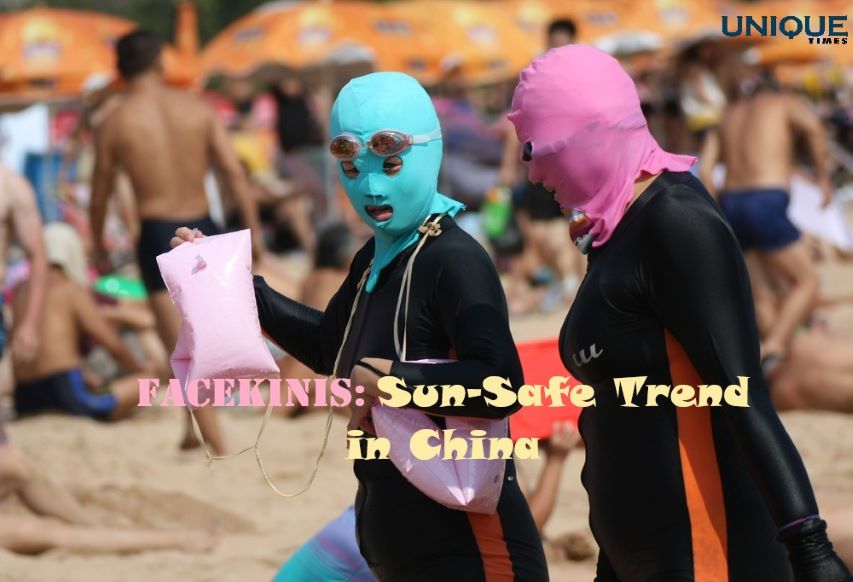Facekinis: The Trending Chinese Beachwear as Temperatures Soar

As the summer heat reaches scorching levels, beachgoers in China are turning to a peculiar yet effective form of sun protection: the facekini. This unique beachwear has been gaining popularity in recent years, and it’s quickly becoming a staple for those seeking relief from the blazing sun while enjoying their time by the sea.
What is a Facekini?
The facekini is a full-face mask, similar to a balaclava, designed to cover the entire face except for the eyes, nose, and mouth. It is typically made from stretchy and lightweight fabric, often in vibrant colors and patterns. The primary purpose of the facekini is to provide effective protection against the harmful rays of the sun, as well as from jellyfish stings and other potential irritants found in the water.
Origin and Popularity
The facekini was invented in the coastal city of Qingdao, China, by Zhang Shifan in 2004. Zhang, a local swimmer, noticed that traditional sunscreens were not providing adequate protection for her face and neck during her swim sessions. Determined to find a solution, she crafted the first facekini from an old piece of fabric. The concept quickly caught on among her friends and fellow swimmers, and the trend started spreading.
Over the years, the facekini has gained popularity beyond Qingdao, becoming a common sight on beaches across China. As temperatures soar, locals and tourists alike are adopting this innovative beachwear to shield themselves from the sun’s harmful UV rays while staying stylishly protected.
Functionality and Benefits
The facekini provides several practical benefits that have contributed to its widespread adoption:
- Sun Protection: China’s scorching summers can be relentless, and traditional sunscreens may not be enough to safeguard the skin from sunburns and long-term damage. The facekini’s full-face coverage effectively shields the skin from direct exposure to UV rays, providing excellent sun protection.
- Jellyfish Protection: Some coastal areas in China are known for jellyfish blooms during the summer months, posing a threat to swimmers. The facekini’s fabric acts as a barrier against jellyfish stings, preventing potential discomfort or injuries.
- Comfortable and Breathable: Despite its full-face coverage, the facekini is designed to be breathable and lightweight, ensuring that wearers stay comfortable even in hot and humid conditions.
- Versatility in Design: The facekini comes in various colors, patterns, and designs, allowing wearers to express their unique style while staying protected.
- Eco-Friendly Alternative: As the awareness of environmental issues grows, the facekini offers an eco-friendly alternative to traditional sunscreens, reducing the need for single-use plastic packaging and chemical-based products.
The Facekini Fashion Statement
While the facekini was initially adopted purely for its functionality, it has now become a fashion statement on Chinese beaches. With the vast array of designs available, beachgoers often coordinate their facekinis with their swimsuits or opt for contrasting patterns to stand out. The trend has even spread to fashion runways and photo shoots, gaining attention from international fashion enthusiasts.
Conclusion
The facekini has proven to be more than just a fad; it has become a symbol of practicality and style on Chinese beaches. As temperatures continue to rise and sun protection becomes a pressing concern, it is no surprise that the facekini is gaining popularity in China and beyond. Its unique design, functionality, and eco-friendly features make it a compelling choice for those seeking to enjoy the beach while staying safe from the sun’s harsh rays.
So, the next time you’re planning a beach trip, consider adding a facekini to your beachwear collection. Stay protected, stay stylish, and embrace the trend that’s taking China’s beaches by storm!
Picture Courtesy: Google/images are subject to copyright








